The Elevator Industry
Human Interest / Elevator Companies Contributing to Technological / Commentary by Industry Veterans / Photos of Industry Veteran Groups in their Environment / Mergers and AcquisitionsElevator Companies Contributing to Technological Advance in the 19th & 18th Centuries
Falconi
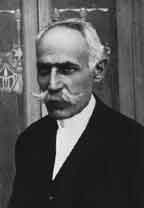
A famed name in the Italian Elevator Industry at the turn of the century was Giuseppie Falconi. He was a genius far ahead of his time, manufacturing steam-driven elevators, glass cars, observation and tower lifts, inclined elevators, electric-powered vehicles and double deckers with a luggage level below the passengers in the 1890s. The compact driving units combining all electromechanical gear indicate rationalization before it became a "pop" word in the 1950s and 1960s. The range of equipment also included paternosters with their chain of cabins and goods and passenger lifts for ships. The inventive Falconi also believed in style and variety. His luxury elevators could be seen as award winners at expositions, in ocean liners or a palace in Asia.
FREISSLER
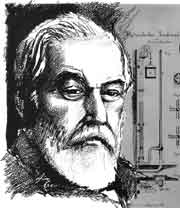
In 1868, Vienna was a rapidly changing town. A creative, outgoing
spirit had emerged when, in 1857, Emperor Franz Joseph I ordered
the great walls to be dismantled and the city connected to the surrounding
villages. Enormous building construction was started; within a few
years, Vienna became a modern capital and the "Crossroads of Europe."
This was the time when
Anton Freissler finished his studies at the Vienna Institute of
Technology and started work with a construction firm. His knowledge
and outstanding ability created a reputation for him, prompting
his election in 1867 as one of the young engineers to be sent to
the Paris World Exhibition by the Austrian Tradesmen's Union.
Leon Edoux, who was to become France's most successful elevator inventor, was initiating Europeans into the nature of the infant vertical lift, exhibiting before fairgoers what he termed, "the first secure hydraulic elevator" - a simple, direct-action apparatus which permitted stopping at any point and automatically regulated the car's velocity. Freissler was fascinated; relating the potential of the new science to the incipient building boom in his country, he returned to Vienna and bought a small workshop. With the aid of four assistants, he began building his first lifts in January, 1869. However, the necessity for sinking a plunger into the ground as deep as the required upward travel prompted the young engineer to seek a new drive system.
In 1870, he was able to file an application for an indirectly acting hydraulic mechanism that would circumvent expensive excavation. With his system, the ram lifted a number of sheaves around which the hoist cable was reaved - a kind of chain block, in reverse. In the same year, Freissler was to install this type of lift in a Viennese palace, putting into service the Austro-Hungarian monarchy's first passenger elevator.
By 1873, the budding Austrian manufacturer had a number of his indirectly acting short-ram lifts in operation and displayed several at the Vienna International Exposition. At this Fair, Freissler brought forth yet another innovation - one for arresting a car's fall, an improvement of the invention by the Frenchman, Libofte. As distinct from earlier devices of this kind, the new safety gear did not engage tooth racks mounted on the rails, but was based instead on the direct contact of serrated jaws to smooth guide surfaces.
A decisive impulse was imparted to the elevator industry by the invention of the electric motor. In 1880, Werner von Siemens had displayed the initial electric lift at the Mannheim Industrial Exposition, but it was a relatively insignificant innovation to the famous von Siemens brothers who were engrossed about the same time with refining the steam-driven dynamo and commissioning the first electric locomotive. Freissler had no such distraction; his dedication was to the elevator field. After exhibiting his prototype four-passenger electric lift - at the Vienna Trade Fair in 1883, he went on to make this type of equipment a primary interest.
An installation in advance of the state-of-the-art in 1890 was the 217-foot travel installation built by Freissler to the top of the Monchsberg at Salzburg. By means of friction, the traction power was transmitted from the driving sheave to a suspension cable which, at that time, supported two cars on an inclined railway.
By the end of the nineteenth century, Anton Freissler's inventive genius was recognized throughout the world. Among other honors, he was awarded a special warrant by Emperor Franz Joseph I and appointed "Imperial Machinery Supplier." Freissler founded a new plant in the Tenth District of Vienna. Shortly after moving the factory, Freissler established a second plant in Budapest, Hungary. This made it easier to supply not only the Hungarian market but East and South Europe as well. The firm also specialized in the construction of heavy-duty equipment, installing several lifts with a capacity of 30 tons for hoisting railway cars. Another, with a capacity of 60 tons for lifting locomotives, was a technical sensation of the period.
Around 1900, the development of electric elevator control systems took place. Freissler's genius in this field resulted in another patent: his "Electrical Control System for Accurate Leveling of the Car."
Anton Freissler's legacy to the company was a continuing spirit of creativity. In 1927, the firm installed a lift with the longest travel in Europe - 330 feet; and when Vienna undertook to repair the ravages of World War II, it designed lifts with platform lengths of over 80 feet for the city's State Opera House and Burg-Theatre.
HAUGHTON
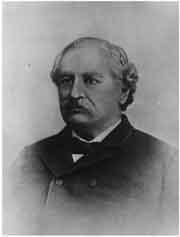
Haughton Elevator Co. began in 1867, when Colonel Nathaniel Haughton
purchased an interest in the Toledo Steam Engine Works, a small
foundry and machine shop founded in 1865 by Cooke, Kneiser & Groff.
The firm produced steam engines, mill equipment and general machinery,
and by 1880, had become active in the manufacture of elevator equipment.
In 1880,
Col. Haughton bought out the last original partner, naming the firm
"N. Haughton Foundry and Machine Company." On November 11, 1897,
the organization was incorporated as the Haughton Elevator and Machine
Co. Control of the firm was to remain in the Haughton family until
the passing of Irving N. Haughton in 1935.
Courtesy Haughton Elevator Company
Haushahn
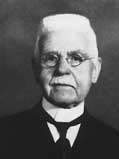
The largest family-held elevator manufacturer in Germany was C.
Haushahn GmbH, founded in 1889, by Immanuel Hahn, descendent of
the famous inventor, Philipp Matthaeus Hahn. The company started
in Stuttgart, but moved to the neighboring town of Feurbach, in
1896, where it set up a shop for the manufacture and repair of weighing
machines.
At the turn of the century,
when the company gravitated more to crane and elevator production,
there were only a few dozen workers; in 1985, there were about 1,800
employees. In 1909, an administrative building was erected on the
Borsigstrasse; the factory area doubled and re-doubled until it
covered fifteen acres, and Haushahn gradually segregated its interests
into three areas: (1) elevators, integrating as many as eight cars
in one group with speeds up to 1,400 fpm; (2) cranes, with capacities
up to 500 tons; and (3) stacker elevators, with a reach of up to
100 feet.
The firm became well
known for its pioneering efforts in designing elevators for high-rise
towers utilized for communications and observation across Germany.
The first giant tower was proposed upon a hilltop overlooking Stuttgart
and, at the suggestion of Professor Dr. Ing. Fritz Leonhardt of
that city, was designed of reinforced concrete instead of the traditional
steel lattice. The tower structure did not present as much of a
problem as the elevators, themselves, for in 1953, the National
Lift Regulations dated back to 1926 and allowed speeds of only 300
fpm. Prior to 1961, "certificates of exemption" had to be obtained
for any new technique or design.
It took particular courage
for the transmission industry to entrust a German elevator company
with the task of providing equipment that would operate at 800 fpm;
as hoisting gear, controls and safety devices had to be developed
in this range. The exemption was obtained upon the condition that
"the two cars be operated by an attendant." After completion in
1956, the 2,650 lb. capacity cars, with 500 feet of travel, proved
successful.
|
KLEEMANNKleemann's Vereinigte Fabriken in Obertürkheim, a suburb of Stuttgart,
had a modest beginning in 1848, when the file-cutter, Ferdinand
Kleemann, began producing and repairing agricultural machinery using
a water wheel on the adjacent stream as a source of power. Later,
the operation was extended by the building of a small foundry. The
founder had four sons, Ferdinand, Wilhelm, Friedrich and Heinrich.
At the turn of the century, Heinrich contributed (by marriage) another
enterprise: the Hildenbrand'sche Fabrik in Faurndau near Göppinggen.
|
|
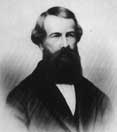 |
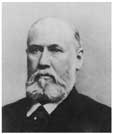 |
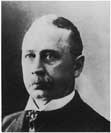 |
The 1880s and 1890s saw an increase in business for the company after a young architect named William LeBaron Jenney solved a problem that had baffled builders. Tall buildings constructed before this time required the support of massive masonry foundations, and even these were limited to about ten to twelve stories. In 1885, Jenney designed a building with load-bearing walls of steel. He used this new technique to construct the ten-story Home Insurance Building in Chicago. Jenney's innovation brought about a construction boom.
During this same era another young architect, L.H. Sullivan (assisted by Frank Lloyd Wright), designed and built the first true skyscraper. Although Jenney and Sullivan are generally credited with fathering the skylines of America's cities, their creative genius would have been stifled had not another innovator invented the safe elevator more than 30 years before.
Realtors and investors soon realized that building up, rather than out, over expensive property meant greater business returns. The Otis brothers benefited from the boom that transformed low-lying business districts of cities into towering and distinctive skylines. The sequel is history and the skylines of cities - all starting with a "wagon spring."
Tendered by Sharon Cramer Drain, Great, Great, Great-Niece of Elisha Graves Otis in "The Otis Bulletin," November 1948.
R. STAHL
The progenitor of the transport combine, R. Stahl built its first
electric elevator almost 100 years ago. Its leading position in
Germany was established in 1965, when it merged with one of the
oldest and most capable of manufacturers, Adol Zaiser (a firm founded
in Stuttgart back in 1879). Its leader, Herbert Zaiser, was an elevator
man long respected in the industry. In 1966, R. Stahl supplied the
elevators in the 1,762-foot-high TV tower. The four cars with their
seven m/sec speed (and wireless control) were the fastest elevators,
with the highest travel in the world. |
|
|
ZIEHL-ABEGG KGThe German industry's largest supplier of elevator motors is located in Künzelsau, two hours drive north of Stuttgart. The company was founded in Berlin in 1910 by Emil Ziehl, a University of Berlin graduate, who had spent many years in the Research and Development Center of AEG-Telefunken in that city. From the beginning, Ziehl-Abegg made special AC and DC motors and its generators were used in the Zeppelins, Lufthansa aircraft and later by the Luftwaffe. The firm grew fast; in 1918, there were 300 employees; in 1938, more than 1,000; and at the end of World War II, nearly 3,000. In 1939, upon the death of the founder, the eldest son, Günther, took over. (At the time, the younger son, Heinz, was serving as a soldier.) Unfortunately, Ziehl-Abegg was located in that part of Berlin taken over by the Russians and the plant was dismantled and shipped East. In 1949, Günther and Heinz Ziehl re-founded the company in Kunzelsau. |
Wm. Wadsworth & Sons Cabins & EnclosuresWilliam Wadsworth began a machinist's business in 1864, repairing belt-driven equipment in the mills in and about Bolton, England. When sons, Thomas and Alfred, previously apprenticed as a millwright and draughtsman, joined the firm it became Wm Wadsworth & Sons in 1891 and commenced manufacturing worm gear hoists and the self-landing transporters that were to become famous for moving material directly between flloors and wagons or trucks. Wadsworth sold thousands, as did several other manufacturers. When the direct hydraulic elevators, serving the Mercey Underground Railroad since 1886 at the world's first under-river crossing, 90 feet underground, had to be replaced Wadsworth substituted four 60-passenger and two 70-passenger lifts - providing the largest carrying capacity in the country - 30,000 people per hour. The firm became much involved in the manufacture of completely packaged lifts in the late 1950's and early 1960's when "industrialized building" had taken over in Europe in the drive to place war-generated homeless undercover in multi-storied apartments. Later the company reversed course and took pride in developing "one-offs" - whether a pair of 30-ton oil hydraulic freights with magnetic door "grips" or explosion -proof winding gear for gas holding tanks. However, from a historical viewpoint, in 1882 it was still maintaining a "teagle-transporter" installed in 1900 in a three-story warehouse and also pointing with pride to the time, decades before when it produced the diversified series of cabins and entrances. 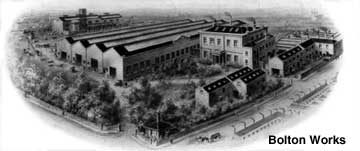 |

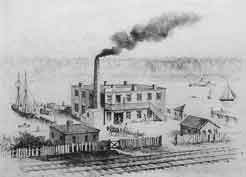 OTIS
OTIS
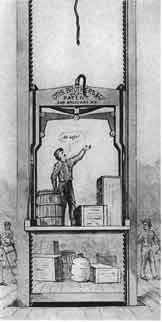 The
safety hoist attracted much attention at first, but interest faded
when the Yonkers Bedstead Manufacturing Co. went bankrupt. With
a family to support and no job, Otis was desperate.
The
safety hoist attracted much attention at first, but interest faded
when the Yonkers Bedstead Manufacturing Co. went bankrupt. With
a family to support and no job, Otis was desperate. 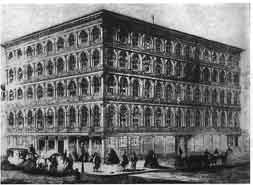 Nine
years after Otis built the first safety hoist, his company was valued
at US $5,000 and employed eight to ten men. Then, on April 8, 1861,
four months short of his fiftieth birthday, Elisha Graves Otis fell
victim to a diphtheria epidemic and died in Yonkers. Otis' sons
Charles and Norton, who since boyhood had assisted their father
in his engineering endeavors, took over the company and struggled
to keep it going during the Civil War and the subsequent recession.
Just six years later, the Otis Co. was doing nearly US $400,000
in sales annually.
Nine
years after Otis built the first safety hoist, his company was valued
at US $5,000 and employed eight to ten men. Then, on April 8, 1861,
four months short of his fiftieth birthday, Elisha Graves Otis fell
victim to a diphtheria epidemic and died in Yonkers. Otis' sons
Charles and Norton, who since boyhood had assisted their father
in his engineering endeavors, took over the company and struggled
to keep it going during the Civil War and the subsequent recession.
Just six years later, the Otis Co. was doing nearly US $400,000
in sales annually. 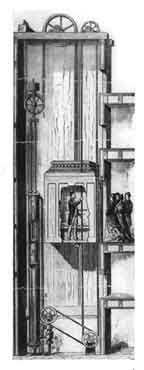 Much
early business came from the hotel industry. In 1866, the St. James
Hotel in New York City became the first such establishment to install
a passenger elevator. In its 1869 catalog, the Otis Co. advertised
that a hotel's upper floors were "the most desirable in the house,
whence the guest makes the transit in half a minute of repose and
quiet, and arriving there, enjoys privacy and coolness of atmosphere
and an exemption from noise, dust and exhalation." Before this revelation,
the penthouse had usually been given to the janitor as partial payment
for his services; climbing multiple flights of stairs was considered
undesirable.
Much
early business came from the hotel industry. In 1866, the St. James
Hotel in New York City became the first such establishment to install
a passenger elevator. In its 1869 catalog, the Otis Co. advertised
that a hotel's upper floors were "the most desirable in the house,
whence the guest makes the transit in half a minute of repose and
quiet, and arriving there, enjoys privacy and coolness of atmosphere
and an exemption from noise, dust and exhalation." Before this revelation,
the penthouse had usually been given to the janitor as partial payment
for his services; climbing multiple flights of stairs was considered
undesirable. 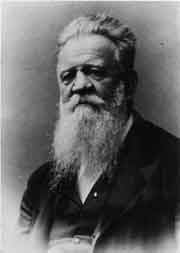 STIGLER
STIGLER
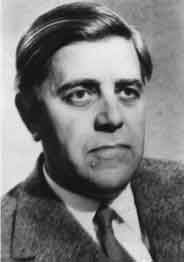 His
son, Augusto Stigler II, who graduated from Milan Polytechnic in
1884, assisted his father in a transition to electric motors and
control, and the pair installed their first electric elevator in
1898. They developed mass production about 10 years later and were
pioneers in the creation of the "packaged" passenger lift so many
of which existed in the European apartment houses of the day. By
1910, 10,000 Stigler lifts were in operation; 20,000 by 1920 and
35,000 by 1930.
His
son, Augusto Stigler II, who graduated from Milan Polytechnic in
1884, assisted his father in a transition to electric motors and
control, and the pair installed their first electric elevator in
1898. They developed mass production about 10 years later and were
pioneers in the creation of the "packaged" passenger lift so many
of which existed in the European apartment houses of the day. By
1910, 10,000 Stigler lifts were in operation; 20,000 by 1920 and
35,000 by 1930. 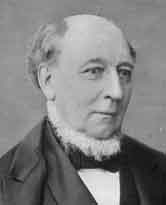 WAYGOOD
WAYGOOD
 Miscellaneous
work was given up for the development of cranes, hoists and lifts,
simplest of which was the hand-powered type for private homes, hotels
and restaurants. These were inappropriate for warehouses, hospitals
or large flats, and steam and gas engines were soon utilized to
take power to larger, higher lifts by means of belts. The General
Power Co. was formed to take water from the Thames, turn it into
steam, and deliver it to an ever-widening area at 700 psi. This
company soon opened branches in Manchester, Newcastle-n-Tyne, and
later in Sidney, Australia, all this providing a stimulus for hydraulic
elevators and powerful hydraulic cranes at the docks. R. Waygood
followed the power wherever it led!
Miscellaneous
work was given up for the development of cranes, hoists and lifts,
simplest of which was the hand-powered type for private homes, hotels
and restaurants. These were inappropriate for warehouses, hospitals
or large flats, and steam and gas engines were soon utilized to
take power to larger, higher lifts by means of belts. The General
Power Co. was formed to take water from the Thames, turn it into
steam, and deliver it to an ever-widening area at 700 psi. This
company soon opened branches in Manchester, Newcastle-n-Tyne, and
later in Sidney, Australia, all this providing a stimulus for hydraulic
elevators and powerful hydraulic cranes at the docks. R. Waygood
followed the power wherever it led!